Recommendations for creating
Vertical flower beds are picturesque compositions that stretch upward and can be filled not only with flowers, but also with herbs and berries.
The principle of creation is always the same: construction of a frame, arrangement of an irrigation system, filling with soil and planting plants. Vertical flower beds have a big advantage over ground ones, as they take up little space and fit into even the smallest area. At the same time, the flowers are open to the eye and do not overlap each other.
Flowerbeds are installed near fences or walls, hung on tree branches, decorate garden paths with them, and zone a site.
As a basis, not only ready-made plastic containers are suitable, but also ordinary pots, bottles, tires, boxes and PVC pipes - in general, everything that can serve as a frame or container for soil.
What types are there?
The structures are arches, columns, towers and pyramids, which determines the size of the flower beds. If the pots are reduced from bottom to top, the flower bed has a pyramidal shape, and if the containers are of the same size, it is colonial. Flower beds in the form of cascades, reminiscent of fountains, look especially luxurious.
Each plant is on its own tier and has its own earthen clod, so flowers can be combined without fear of an unfavorable neighborhood. Due to the small area of open land in the flower beds, there are almost no weeds, and the water does not drain outside the planter, so flower care is minimized.
On a wall or fence
The easiest and most effective way to decorate a fence or empty wall is to use decorative landscaping containers. They will help organize the space and make a boring plane more voluminous. Instead of plastic containers, wooden boxes or pipes can be used, fixed on top of each other, randomly or in a checkerboard pattern.
In the photo there are special containers where plants are planted to create vertical landscaping.
Flower screen
The structure is a frame with a base made of wood or metal. The screen perfectly zones the space and can be installed in any suitable place on the site - for example, to separate the patio. The degree of its transparency depends on the number of planted plants and their ability to grow as a solid wall.
The photo shows a vertical wooden flower bed for petunias, made by hand from a pallet.
Pillar-shaped
A flower pillar or tower can be an independent decoration framing a path or an entrance to a house, or an addition to a ground flower bed. The most common support is a cylinder with holes in which ampelous plants are planted.
The photo shows a vertical multi-tiered flower bed made in the form of a cascade that expands from top to bottom.
What kind of plants can you plant?
In vertical flower beds, flowering annuals maximize the beauty of their climbing form: petunia, lobelia, nasturtium, violets, balsam, sutera. Green deciduous plants are also suitable, the tiered placement of which will perfectly emphasize their shape: chlorophytum, fern, daylily.
The photo shows an example of a volumetric vertical flower garden in the form of an arch.
Bushy plantings are also suitable: lush begonias, lamb, coleus, alissum. Plants with extensive root systems should be avoided.
Experienced gardeners use vertical beds to plant strawberries, basil, rosemary and mint. A lot of soil is not needed for their growth, but moisture must be carefully monitored. Before flowering strawberries, it is imperative to apply complex fertilizers.
How to do it yourself?
There are several ways to create a homemade vertical flower bed. Consider the simplest and most interesting master classes.
From the grid
Before creating a flower garden from a bucket and a net, we recommend that you define a permanent place for it: the finished heavy structure will be difficult to move.
Tools and materials
For manufacturing you will need:
- Metal grid.
- Bucket or sturdy pot.
- Plastic pipe.
- Film.
- Stones.
- Wire.
It is better to plant flowers in 1-2 days, so that the earth has time to be compacted. Water for irrigation is poured into a pipe with holes, moistening the soil. Detailed instructions for creating a vertical flower bed from a mesh are in this video:
From pots
To create this picturesque tower, you can use any container you can make holes in.
Tools and materials
To make a bright vertical flowerbed of pots, you will need:
- Five clay pots.
- Steel pipe.
- Drill
- Priming.
- Flowers.
- Paints and brushes are optional.
Step-by-step instruction
- Choosing a place for the terracotta tower: once assembled, it cannot be moved. We drive a metal rod into the ground - deep enough so that the structure is stable and the pots fit. We put on the largest capacity on it.
- We fill it with earth so that the second pot, put on the pipe, does not fall through.
- We fill it with soil and thus create a tower, repeating the actions done. Expand the hole in the bottom if necessary.
- We plant flowering plants. If desired, the tower can be decorated to your liking - for example, painted with acrylic paint or alkyd enamel.
From plastic bottles
You can decorate a wall or fence with flowerpots cut from plastic bottles. You can also build a special screen for them by zoning the site. The containers should be cut into two parts and two pots should be made, or a hole should be made on one of the sides. Over time, the flowers will grow and cover the unsightly flowerpots.
Tools and materials
For work you will need:
- Bottle
- Awl and screwdriver for making holes.
- Stationery knife.
- Scissors.
- Wooden lath and self-tapping screws for fixing.
- The soil.
- Plants.
One of the options for creating a suspended vertical flower bed from plastic bottles is presented in this video:
From pallets
To decorate your garden or vegetable garden with a flower garden from a wooden pallet, you need to find a solid structure without broken boards. The pots can be installed inside, fixed from the outside, or do without special containers.
Tools and materials
For work you will need:
- Pallet.
- Sandpaper.
- Geotextile.
- Furniture stapler.
- Stain, varnish or paint, brushes.
- Priming.
- Flowers.
Step-by-step instruction
- We grind the pallet with sandpaper to remove all the irregularities. For convenience, you can use a sander. We cover the tree with a protective compound - this way the flowerbed will last much longer.
- We fold the geotextile in two layers. We fix the structure securely with a stapler.
- We put the pallet horizontally, fill up the earth and plant the flowers tightly to each other. In this position, the flower bed needs to be sustained for a week: the soil will be compacted, and the plants will take root and take root.
- We turn the structure over, lean it against a support or fix it on a solid foundation - a wall, fence or gazebo. In pallets, you can grow seedlings and healthy greens to the table.
From boxes
This vertical flower bed takes up little space and is complemented by an original mobile platform that allows you to move the structure. But even without wheels, such a composition looks unusual, acting as an accent detail of landscape design.
Tools and materials
For work you will need:
- Five treated and stained drawers.
- Slab for a mobile base.
- Two slats.
- Burlap or geotextile.
- Four furniture wheels.
- The soil.
- Seedling.
- Nails and a hammer (or a screwdriver with self-tapping screws).
- Saw.
- Glue gun or stapler.
- Wood glue.
Step-by-step instruction
- We fasten the wheels to the wooden platform.
- We design a future vertical flowerbed by stacking boxes on top of each other. The structure should be stable.
- We glue the gaps between the slats with burlap or geotextile so that the earth stays in place.
- We fix the assembly with rails for stabilization. We use screws and wood glue.
- We fill the boxes with old leaves, twigs and soil.
- We plant flowers, provide proper watering and enjoy the result. The configuration and location of the vertical flower bed of boxes can be any.
Design ideas
To create an unusual flower garden, gardeners use old buckets, watering cans, barrels and even stepladders. Wide PVC pipes are often used as an idea for creating a vertical flower bed - small holes are made in them for seedlings (or cut in half) and suspended on a support.
In the photo, the harvest of lettuce grown in the beds of pipes with a diameter of about 10 cm.
Photo gallery
A vertical flower garden is a picturesque accent that creates an original composition of ampelous plants in the garden. In order for the flower beds to retain their beauty and splendor in hot weather, the plants must be watered twice a day.


 10 practical tips for arranging a small kitchen in the country
10 practical tips for arranging a small kitchen in the country
 12 simple ideas for a small garden that will make it visually spacious
12 simple ideas for a small garden that will make it visually spacious

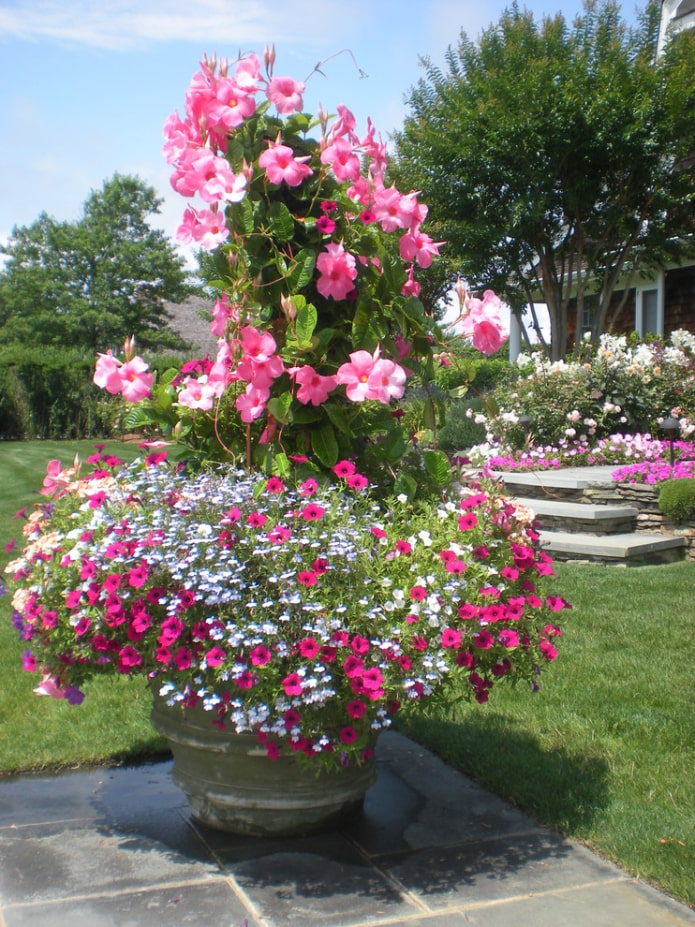
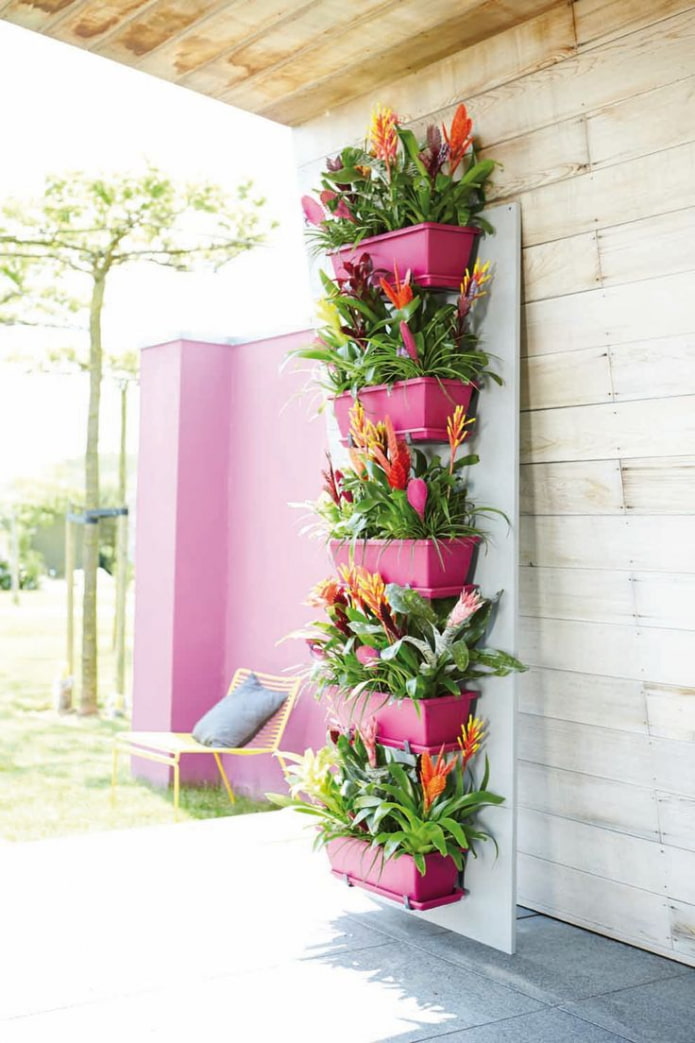
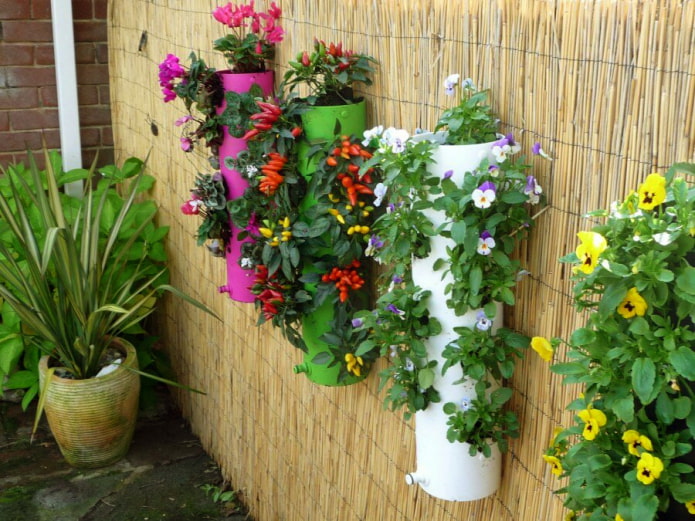
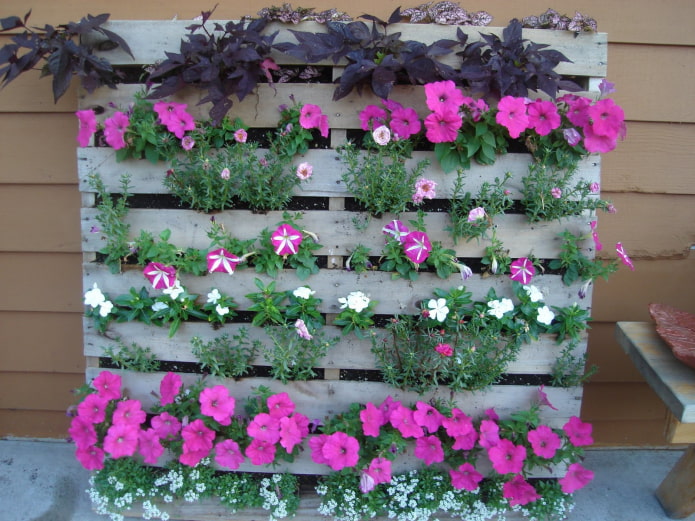
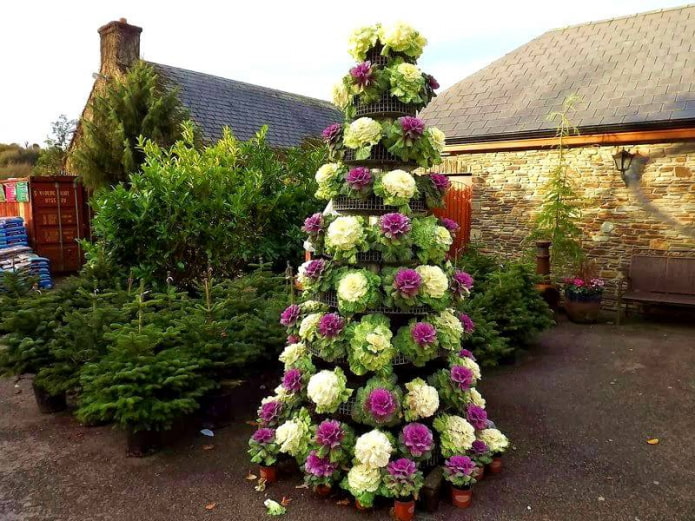
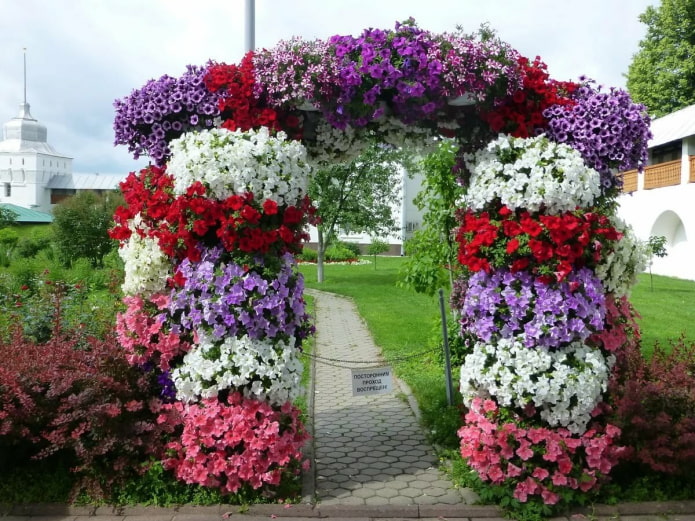
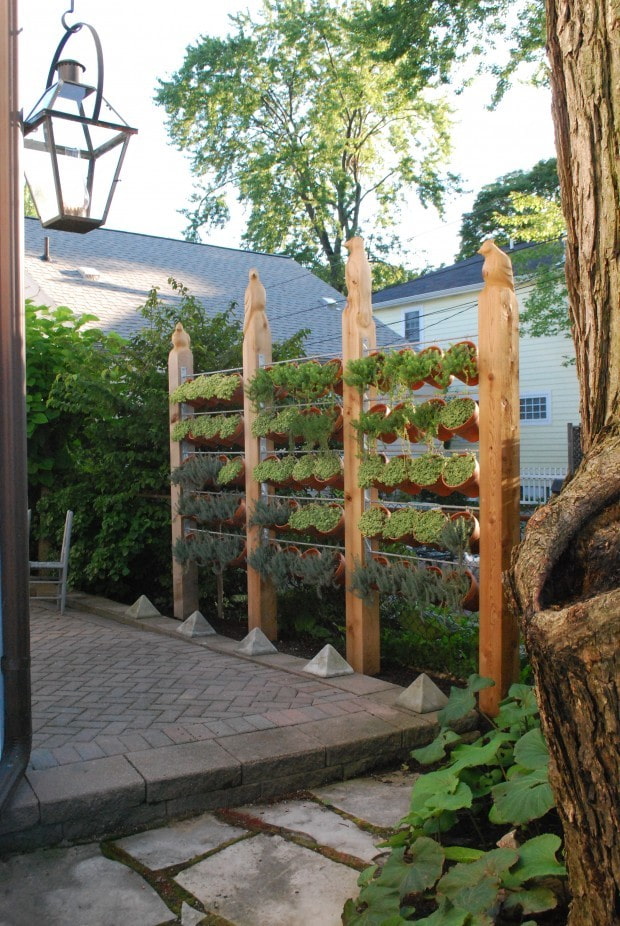
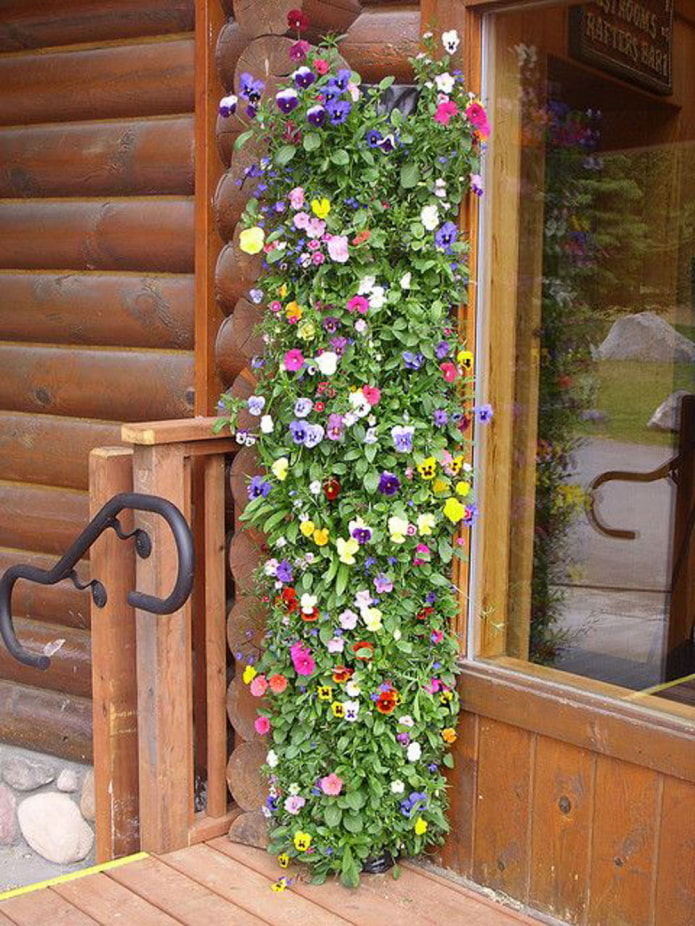
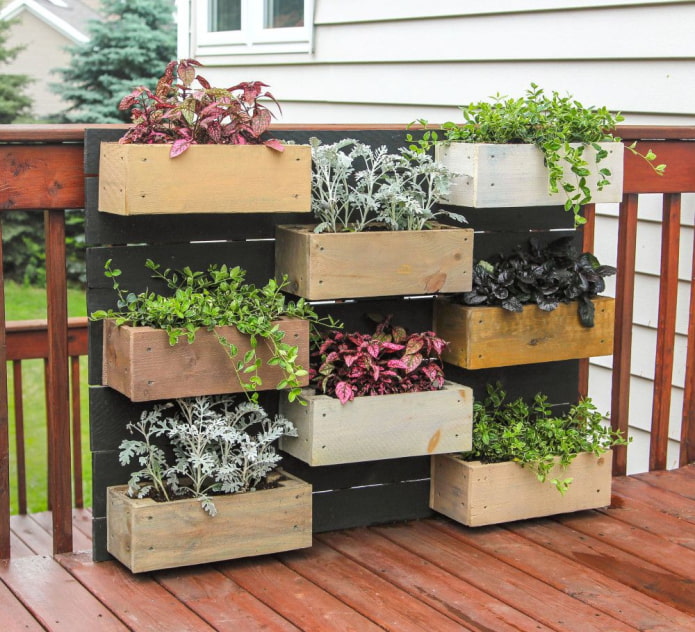
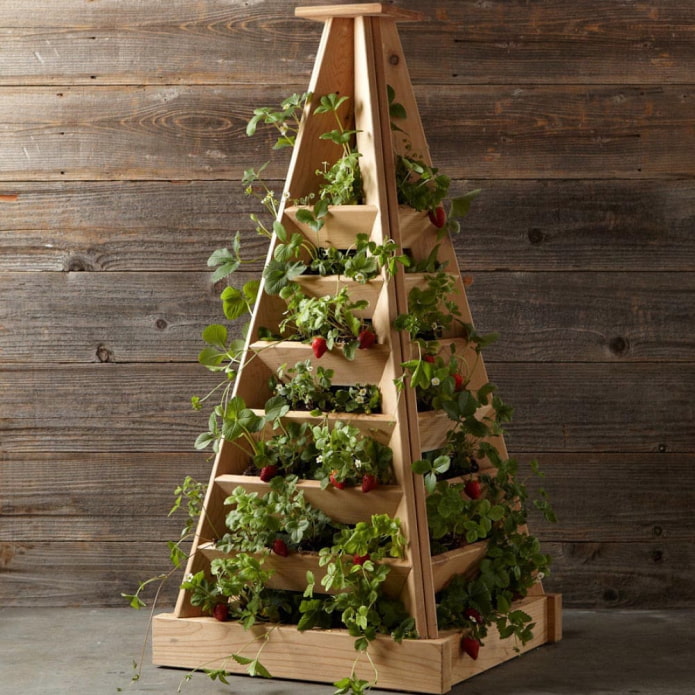
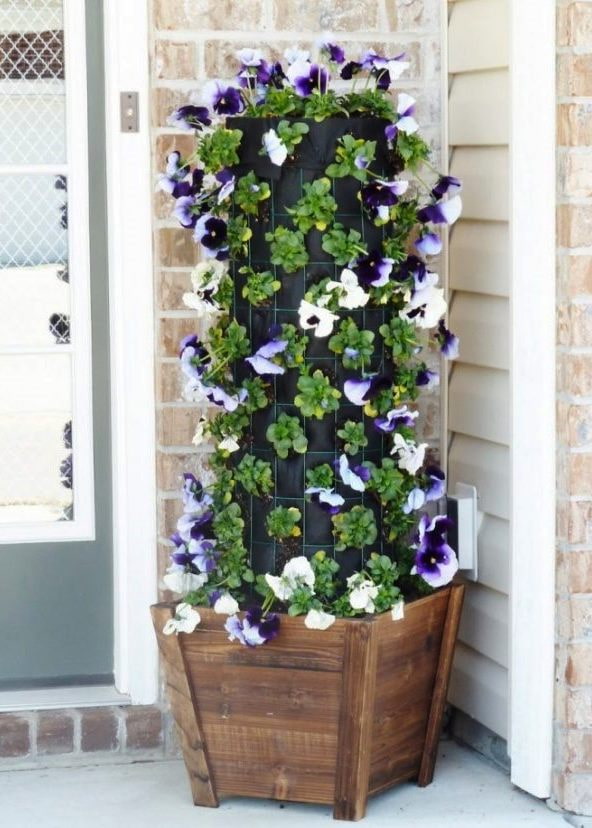
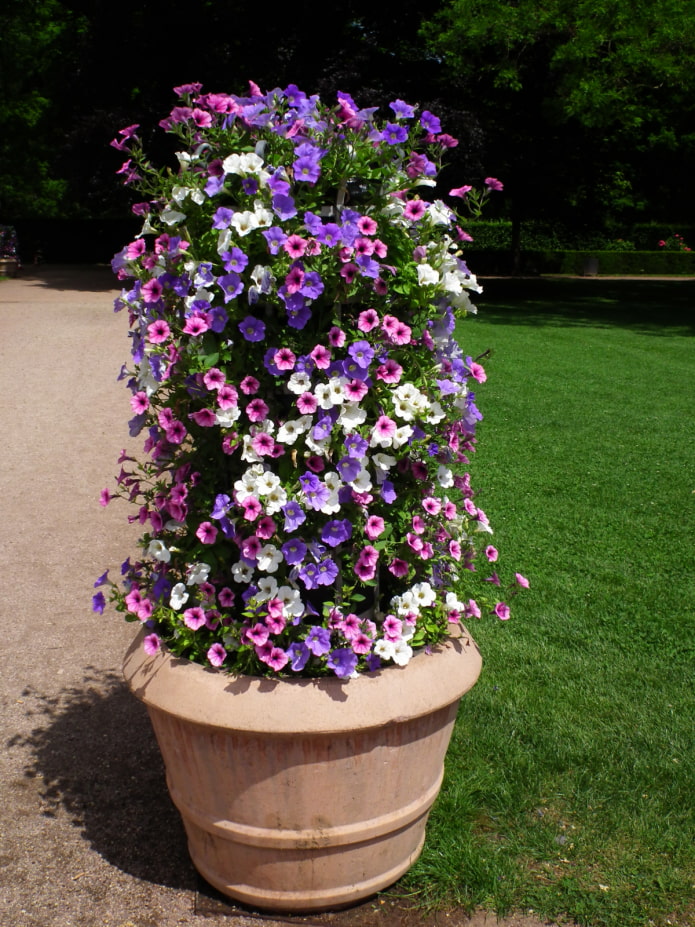
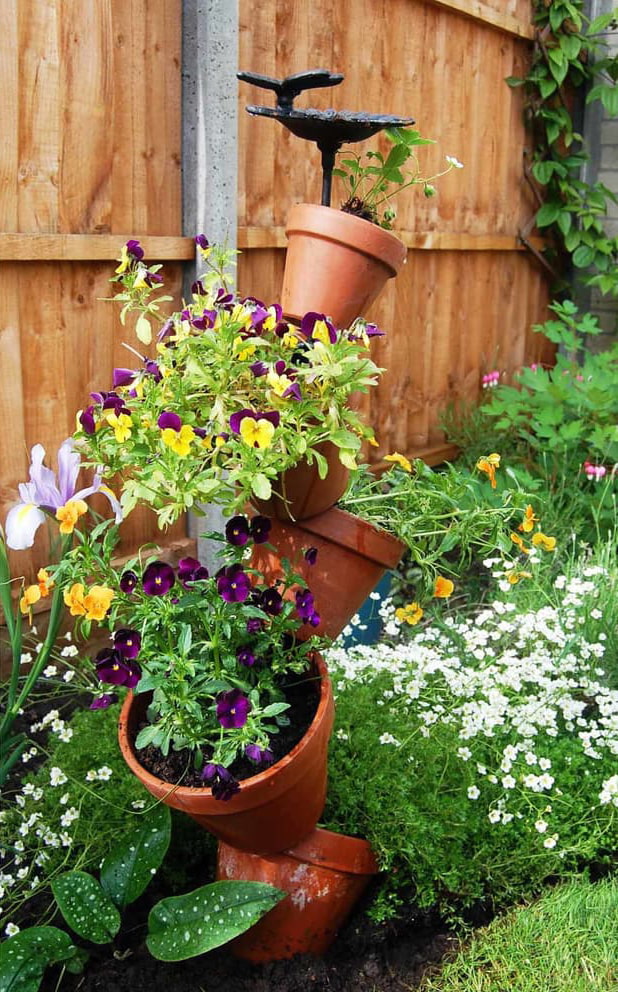
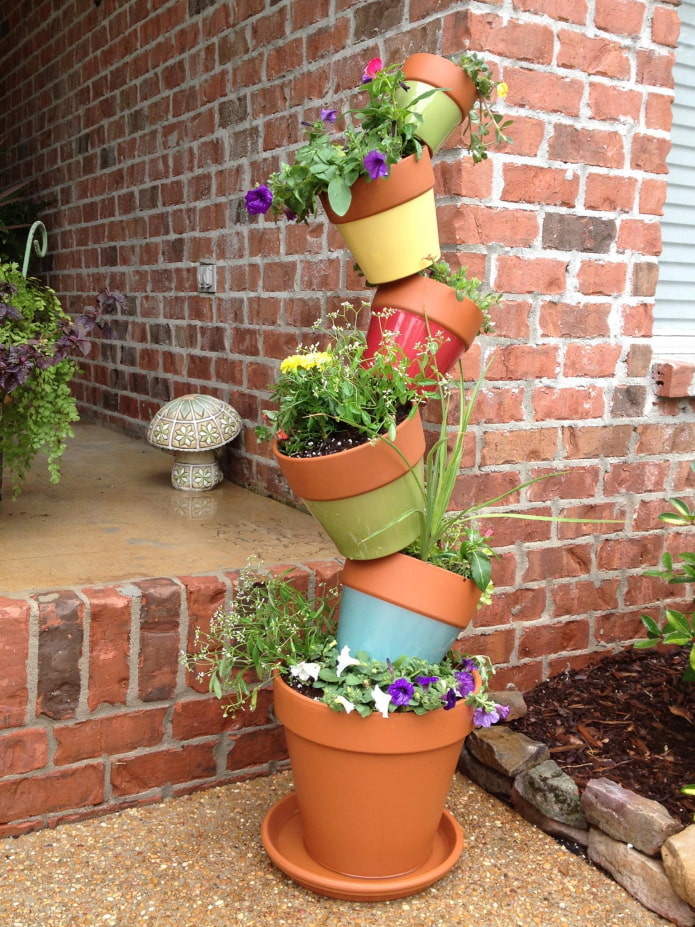
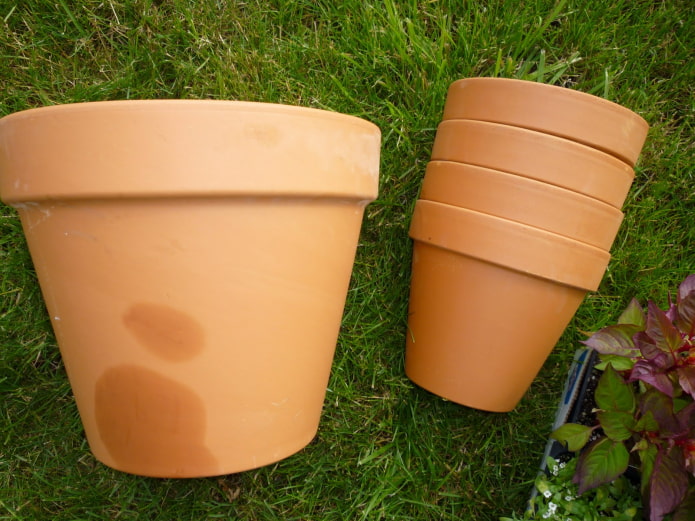
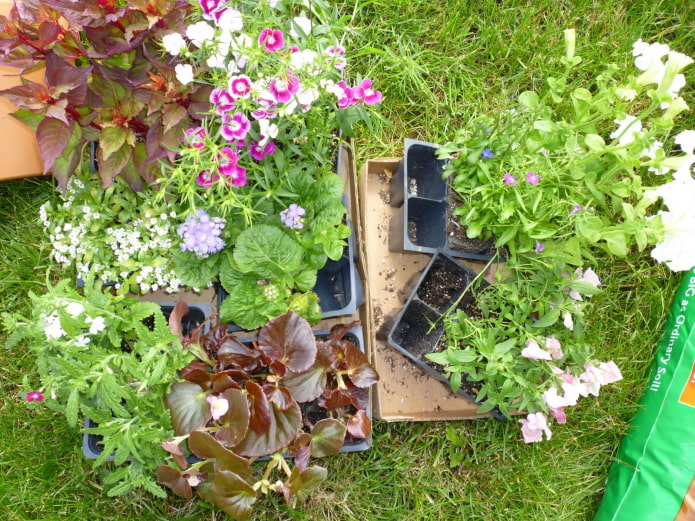
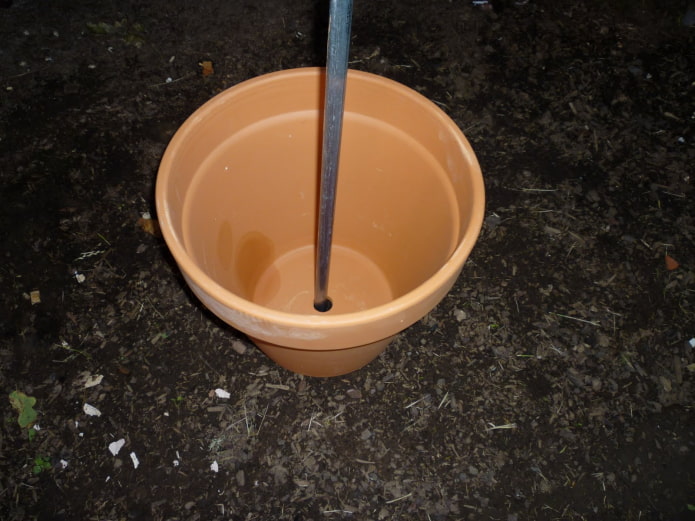

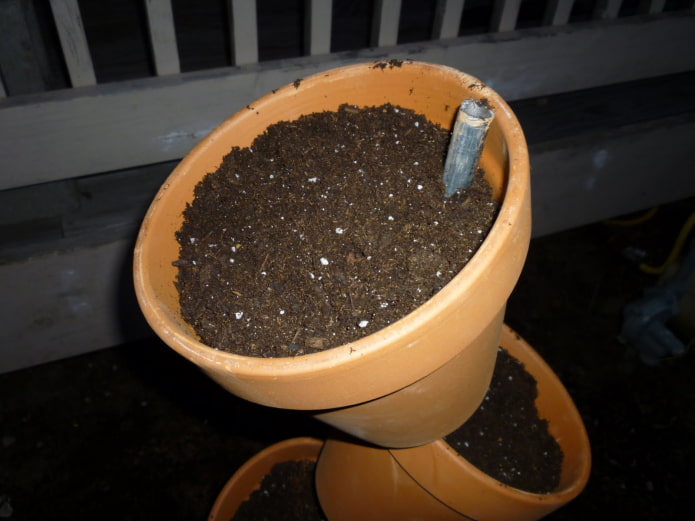

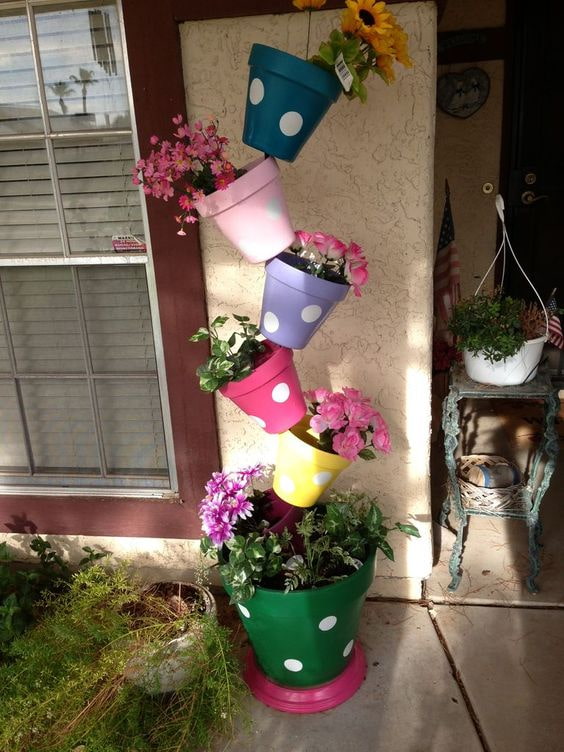
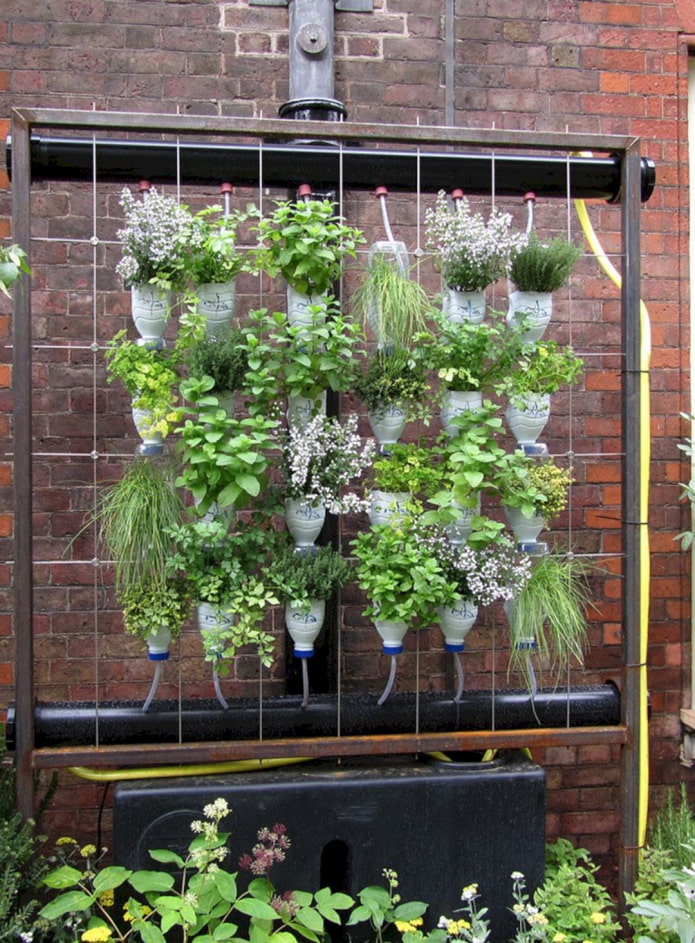
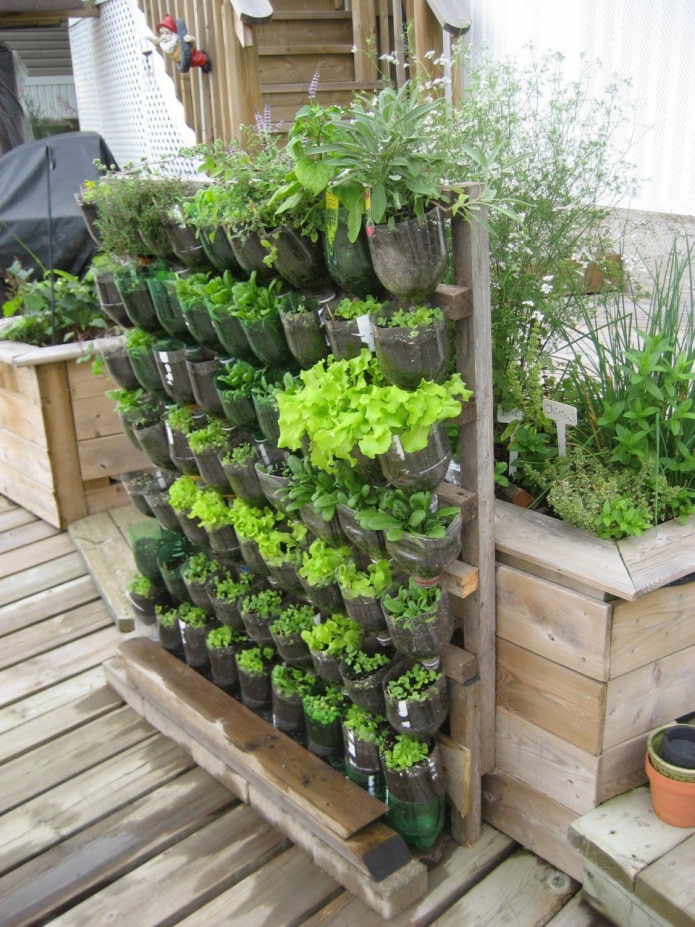
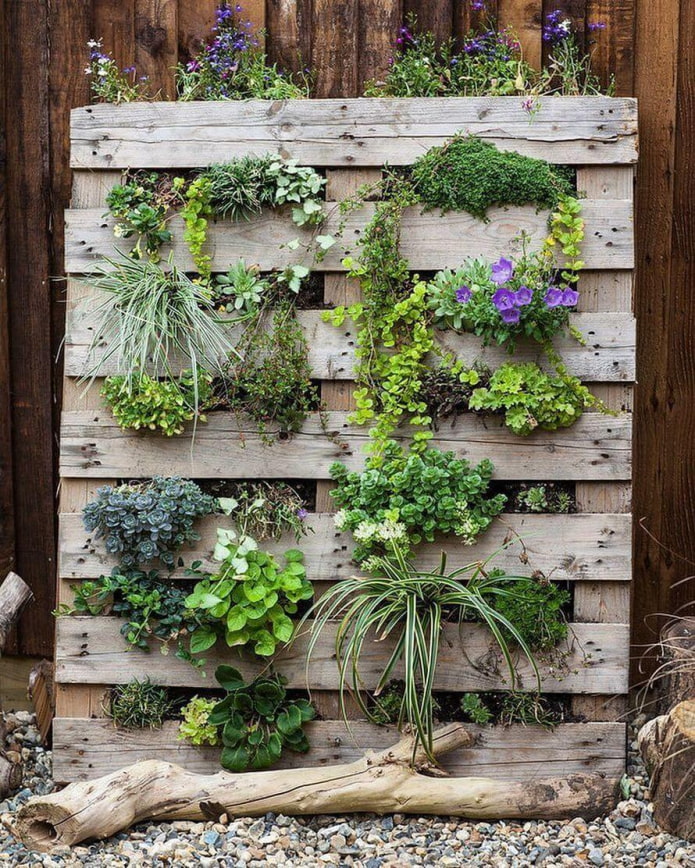
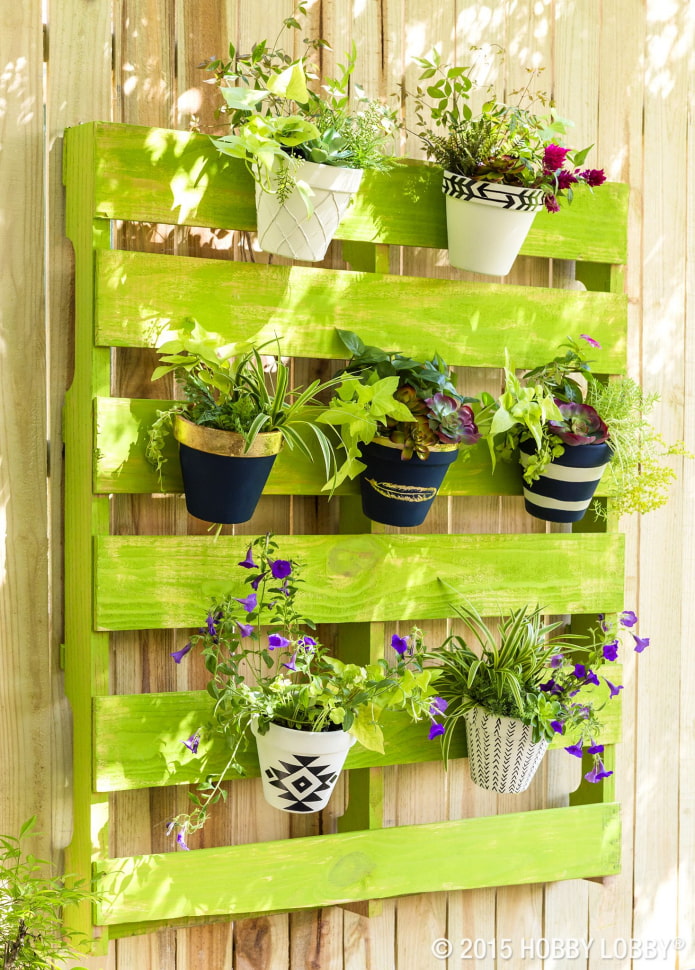
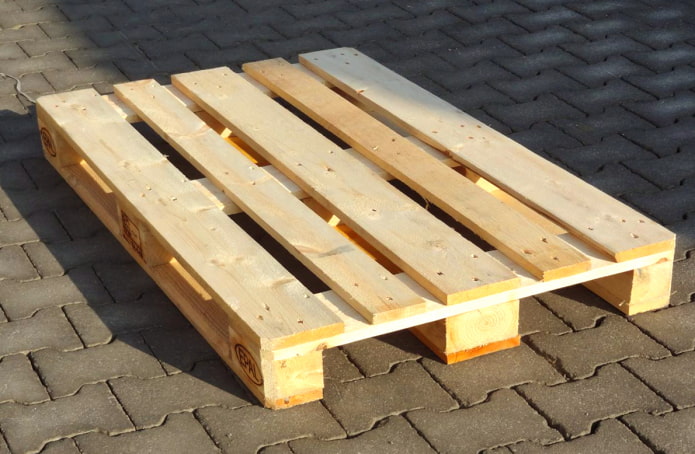
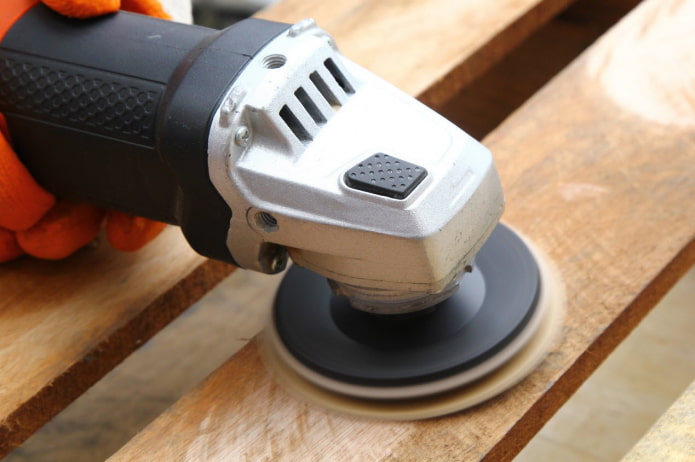
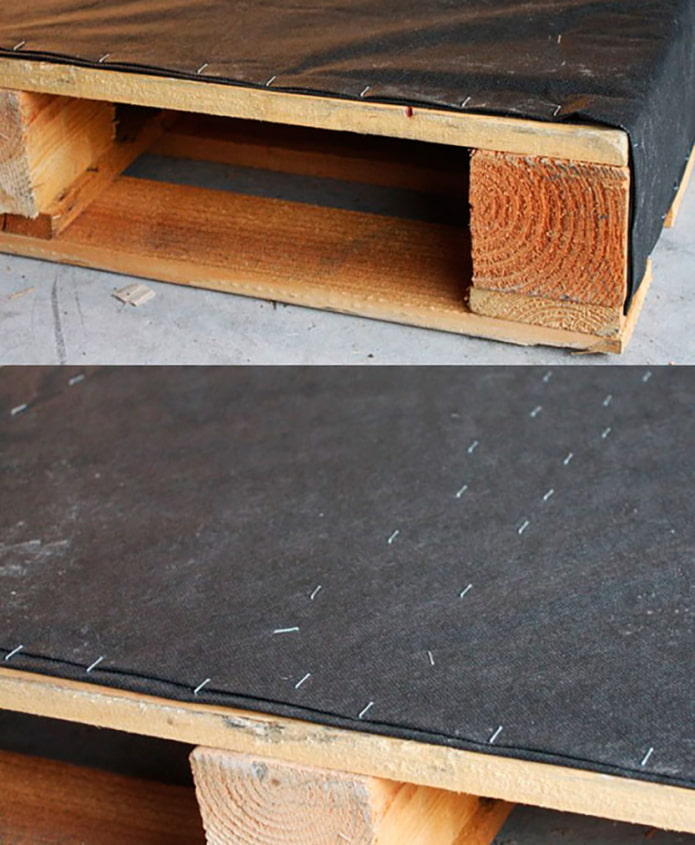
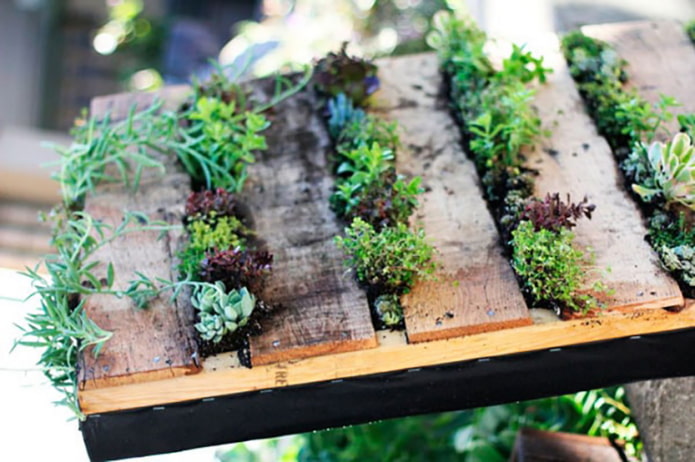
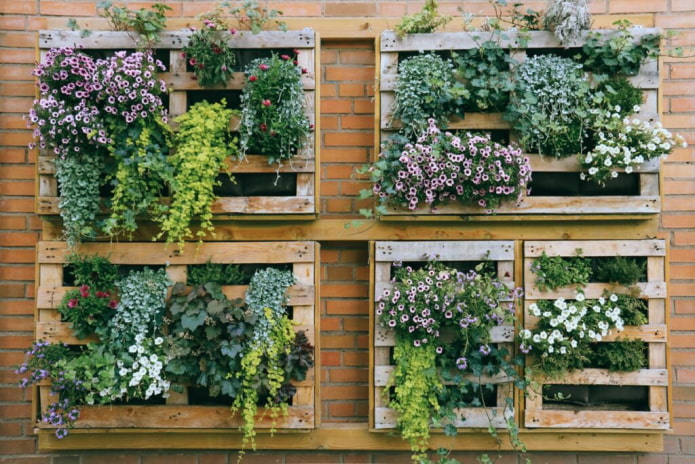





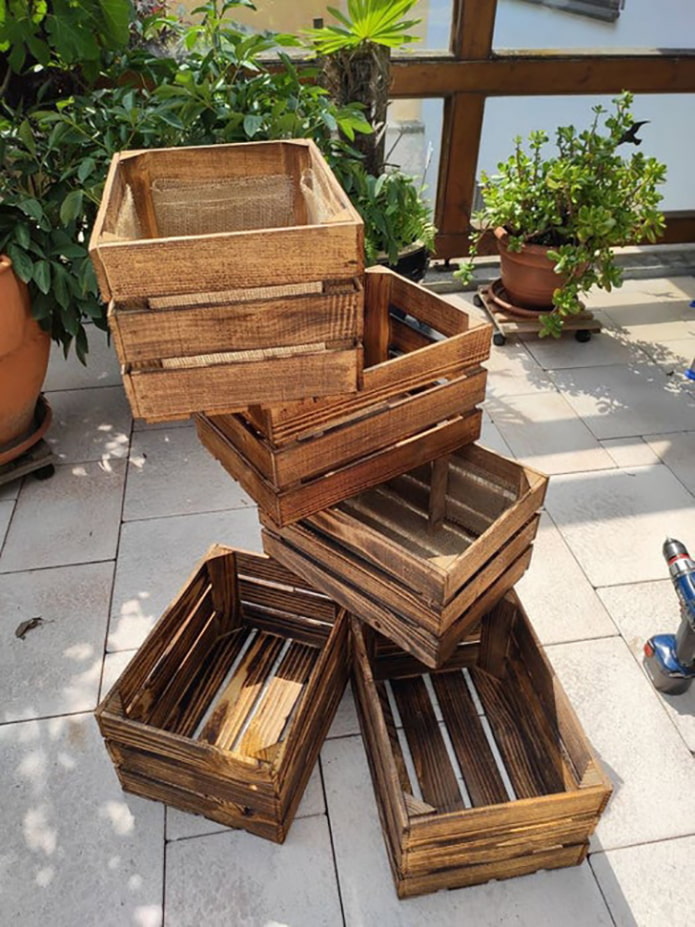
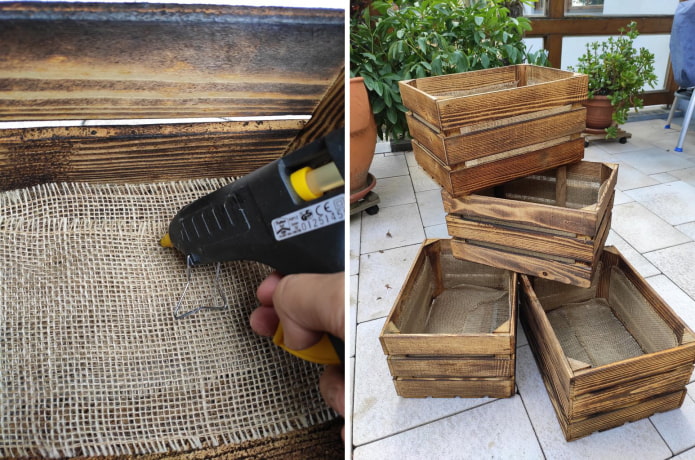
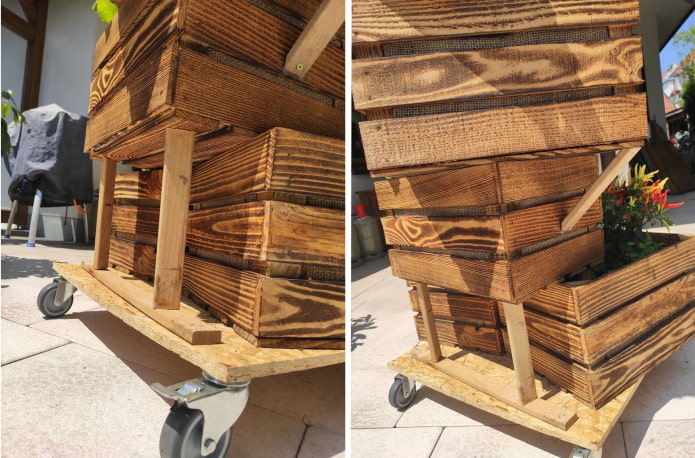
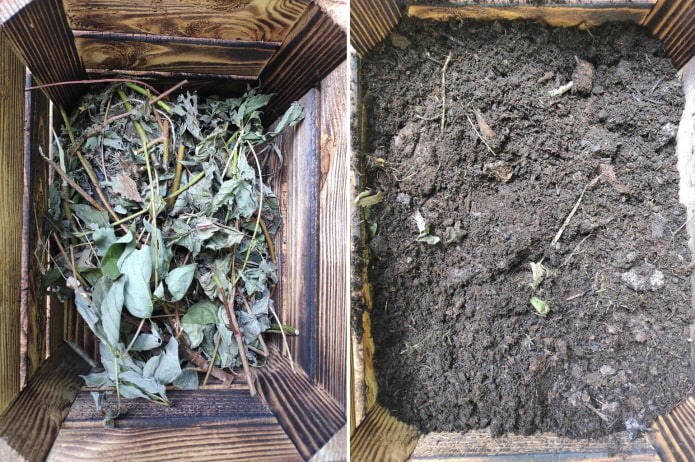
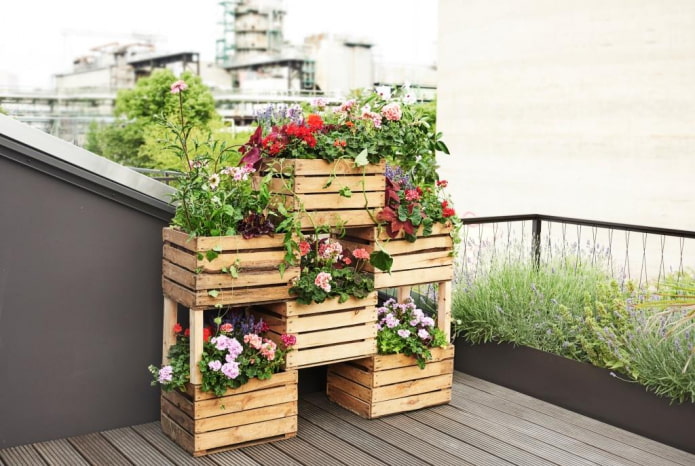
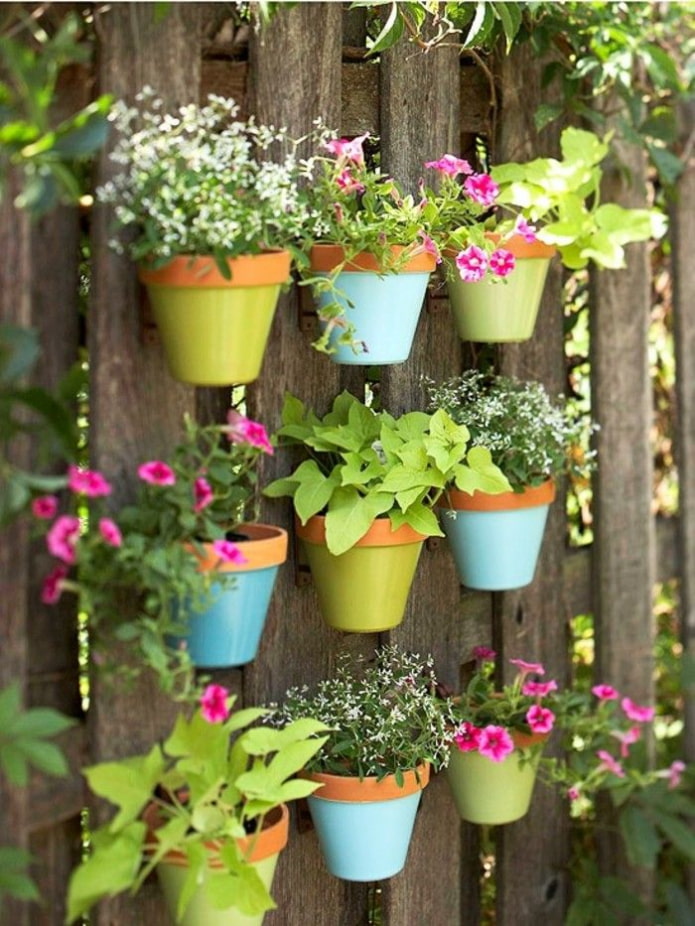
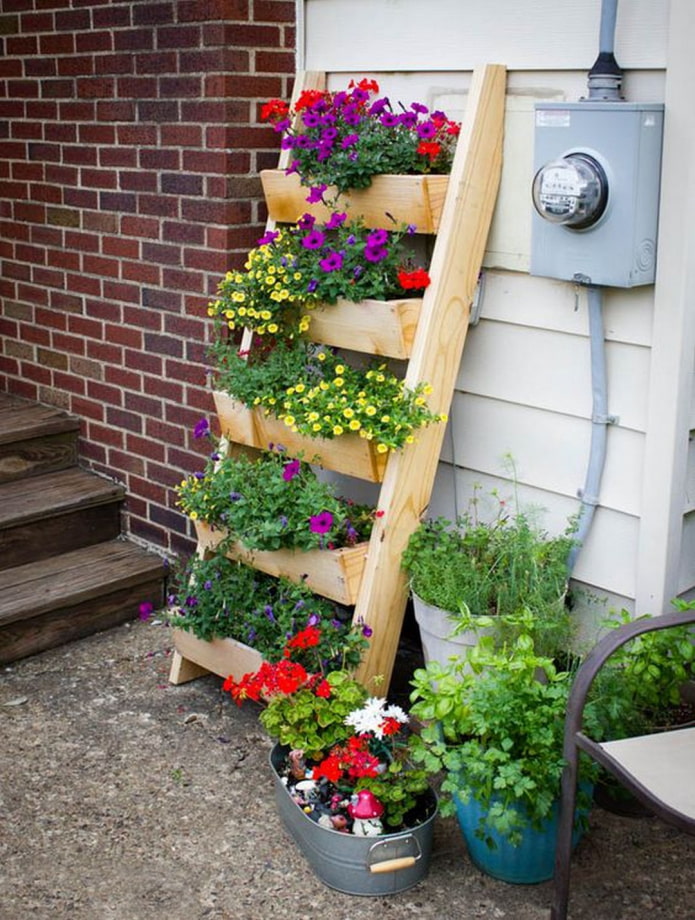
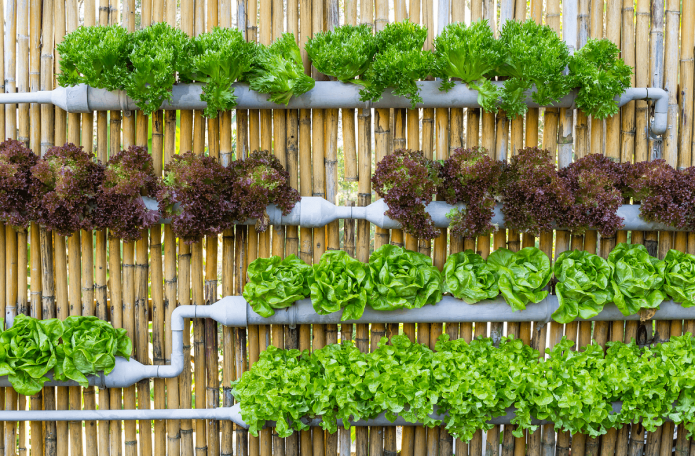
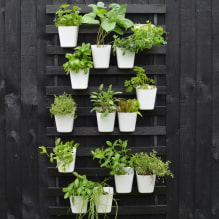
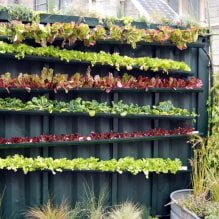
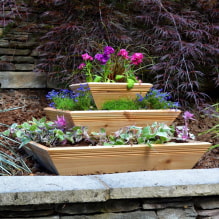



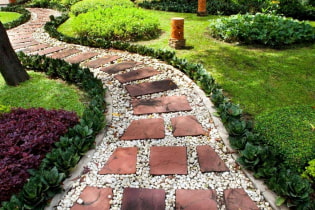 How to decorate garden paths beautifully for a summer residence?
How to decorate garden paths beautifully for a summer residence?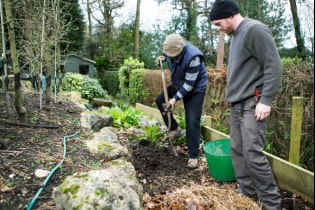 What fertilizers should be used in spring?
What fertilizers should be used in spring? How to use gabions on the site?
How to use gabions on the site?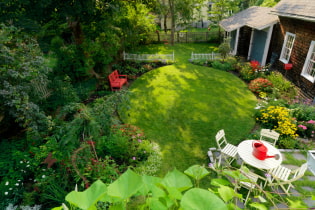 Landscaping of a summer cottage on 6 acres
Landscaping of a summer cottage on 6 acres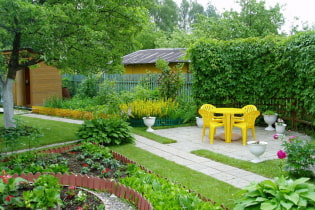 How to arrange the landscape design of a suburban area of 4 ares?
How to arrange the landscape design of a suburban area of 4 ares?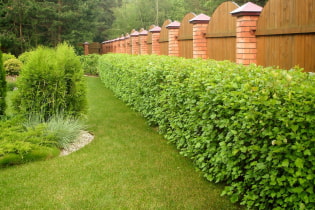 What plants can you make a hedge?
What plants can you make a hedge?